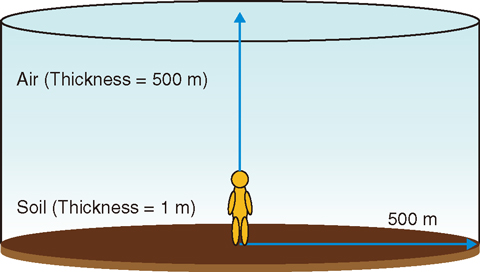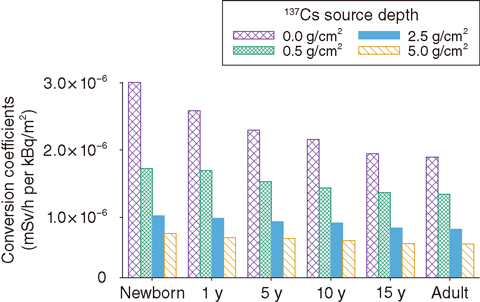
Fig.1-5 Schematic of the geometry used to calculate dose-conversion coefficients

Fig.1-6 Dose conversion coefficients of 137Cs
Dose estimation for radioactive cesium (134Cs and 137Cs) distributed in soil because of the accident at the TEPCO’s Fukushima Daiichi NPS (1F) is important for establishing action plans to ensure the radiological safety of the residents. While spatial dose rates have been monitored continuously, time-dependent changes of the radioactive Cs should be considered in predictions of radiation doses over the middle- to long-term. We have developed a method for predicting the human doses as a function of time after the accident at 1F by calculating age-dependent conversion coefficients from the activity concentration of the Cs to the effective doses that indicate the human dose.
The conversion coefficients were calculated for six age groups within the public (newborns; 1-, 5-, 10-, and 15-year-old children; and adults). We used the radiation transport code PHITS and computational phantoms representing the anatomical structure of human bodies. The size of the geometry depicted in Fig.1-5 was equivalent to approximately five times an average flight path of γ-rays through air without interactions. This size is adequate for treating the contributions of distant radioactive Cs to the dose. The behavior of the γ-rays from a planar source of 134Cs or 137Cs was traced in the calculation geometry, and the absorbed doses of tissues and organs were calculated using computational phantoms centered on the ground.
The effective dose was computed from the results of the absorbed doses according to the 2007 Recommendations by the International Commission on Radiological Protection (ICRP), and the coefficients for converting activity concentrations into effective dose rates were obtained. In addition, we evaluated the conversion coefficients for volumetric sources by means of a weighted integration for the results of the planar sources. The decays of 134Cs and 137Cs were also considered along the time course after the accident at 1F.
Fig.1-6 shows the age-dependent dose conversion coefficients of 137Cs. The conversion coefficients of the effective dose rate increase for younger subjects because the tissues and organs inside younger subjects are closer to the radiation source in the soil than those inside adults. As the depth of the source in the soil increases, the effective dose rates decrease because of the shielding effect of the soil.
Based on the present results, the effective dose rates for various age groups can be estimated considering the time-dependent changes of radioactivity and the depth profile of the Cs. These data are very useful for predicting the doses of the residents who return to the areas where the evacuation orders have been lifted after remediation.